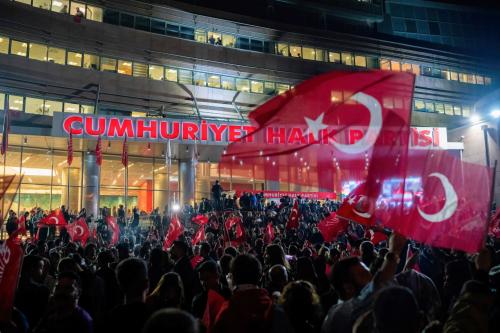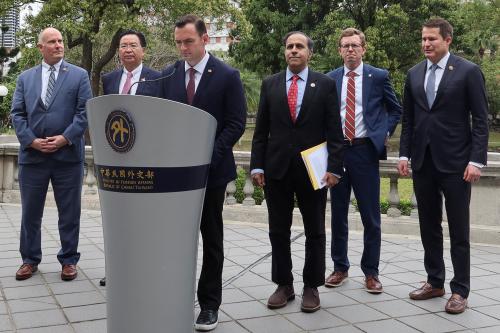Evo Morales suffered a historic defeat in the referendum held last February 21 in which he was seeking the support of the citizens for passing a constitutional reform that would have enabled him to run again in 2019 for a new presidential term ending in 2025. According to preliminary results released by the Supreme Electoral Tribunal, the “No” vote beat the “Yes” vote by a narrow margin (51.30% to 48.70%).
This is the third consecutive defeat for parties in power in South America in recent months: the defeat suffered by kirchnerismo/peronismo in the presidential elections in Argentina in November (after 12 years in power); and that of chavismo in Venezuela’s legislative elections on December 6 (after 17 years of exercising absolute control over the National Assembly).
The case of Morales was, in soccer terms, an own-goal. Evo was overly-confident, perhaps influenced by the uninterrupted succession of overwhelming victories he has achieved in the last decade. He lost it – as Martin Caparrós just wrote – to his own hubris.
What explains the swing, in a very short time, from the landslide in the 2014 presidential elections, where he won 61% of the vote, to the defeat a few days ago? In my opinion it is a combination of factors. First, a presidential election (where the opposition was divided) is not the same as a referendum (in which the option for the NO brought together a large plurality of sectors who, for various reasons, opposed Evo being able to seek a new re-election). Second, recent months were not easy for the government: In addition to the bad economic news (fall in oil and gas prices), there were various corruption scandals, some of which extended to Evo himself. And third, a sector of the citizenry supporting the NO vote made very intense and intelligent use of social media, which was a major factor in the defeat of the “Yes” forces. Nonetheless, the fact that Morales won nearly 49% of the votes after 10 uninterrupted years in power cannot be underestimated. This process (from which Evo emerges weakened but by no means finished) ushers in a totally unprecedented political scenario heading into the 2019 presidential elections.
One will have to see what happens (to round out an overview of the ALBA countries in South America) in Ecuador in the February 2017 presidential elections, where Rafael Correa is currently impeded (as the result of the recent amendment regarding re-election) from seeking a new term.
Everything appears to indicate that the new economic cycle (characterized by a marked economic slowdown, especially in South America), citizens’ weariness with the “long administrations” (many of which have been in power for more than a decade) and the attrition they have suffered as a result, in addition to the new demands for more transparency and accountability, repudiation of corruption, and the demand for better quality public services, are giving rise to the beginning of a new political-electoral cycle in which, in contrast to the recent past (in which the continuity of the parties in power prevailed), change and alternation in power are now carrying the day.
The combination of these factors had already made victories by parties in power more difficult in numerous elections in South America in 2014, in several cases (Brazil, Uruguay, Colombia) forcing second-round elections. In 2015, the economic situation in the region continued to deteriorate (the regional average was a contraction of 0.4%), bad news prevailed in social conditions (stagnation in poverty-reduction, according to ECLAC, and the first increase in unemployment in five years, according to the ILO), and there was an increase in corruption scandals, which in the case of Guatemala, forced the resignation of former president Otto Pérez Molina and his vice-president, and the arrest of both on corruption charges.
Unlike other analysts, I do not interpret these results as marking a swing in the region from the left to the right, but rather as reflecting citizens’ weariness with presidents who have been in power for many years and who, personally or by means of their parties, would like to continue in power for many more years. I also observe citizen rejection of presidents who are characterized by a high degree of personalization, who seek to concentrate considerable power in their own hands, who have a very confrontational and polarizing leadership style, and whose administrations are negatively impacted by serious corruption scandals. Moreover, all these regimes share a common problem, which is one of their main weaknesses: succession in leadership. We are seeing it in Venezuela: the death of Chávez gave way to the disastrous administration of Nicolás Maduro.
In my opinion, what does appear to be clearer and clearer is that the winds of change and of alternation are beginning to blow more forcefully in the region, especially in South America; and that the age of the hyper-presidents is winding down. A citizenry that is increasingly informed, empowered, and demanding, through the vote, mobilization in the streets, and the use of social media (Morales blamed them for his defeat) is placing clear limits on the efforts of these presidents to concentrate too much power and attempt to remain in power indefinitely.
Nonetheless, we should be careful in our analysis and not draw hasty conclusions. I do not believe that these results will lead to the imminent end of the political movements that were defeated at the polls in the last three months. Hence the importance of monitoring the next presidential elections very closely, not only those scheduled for 2016 (Peru, Dominican Republic, and Nicaragua) but also those to be held in 2017 and 2018, in particular in Ecuador, Chile, Brazil, Mexico, Colombia, and Venezuela (if the Venezuelan elections are not called early as the result of the current economic crisis and the clash of branches of government between the executive and the opposition).
Only after these elections, and in light of their results, will we be in a position to better understand the characteristics and trends of the new political-electoral cycle that is emerging in Latin America.
This piece was originally published in
La Nación.


Commentary
Op-edWinds of change blow across South America
February 26, 2016